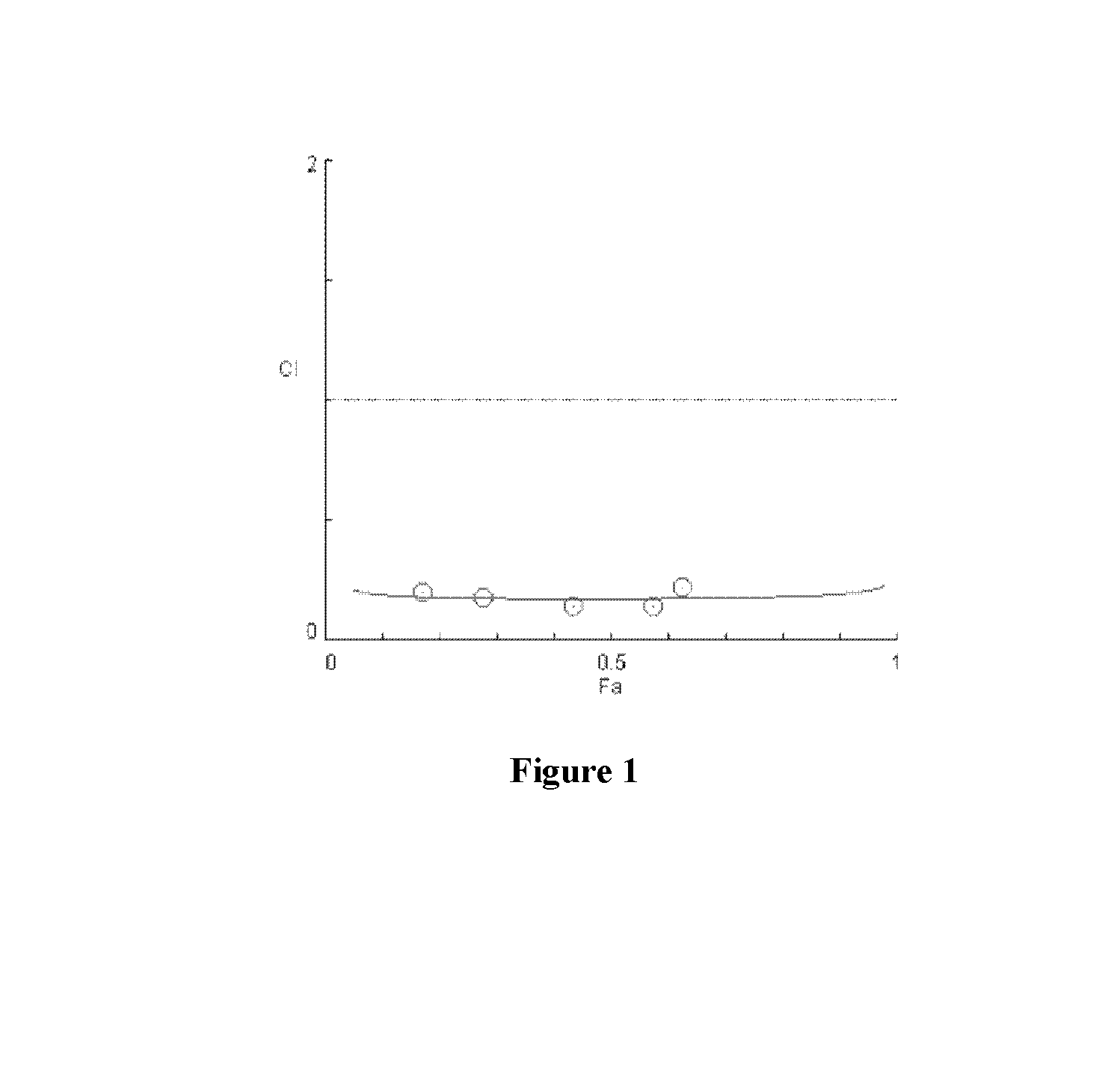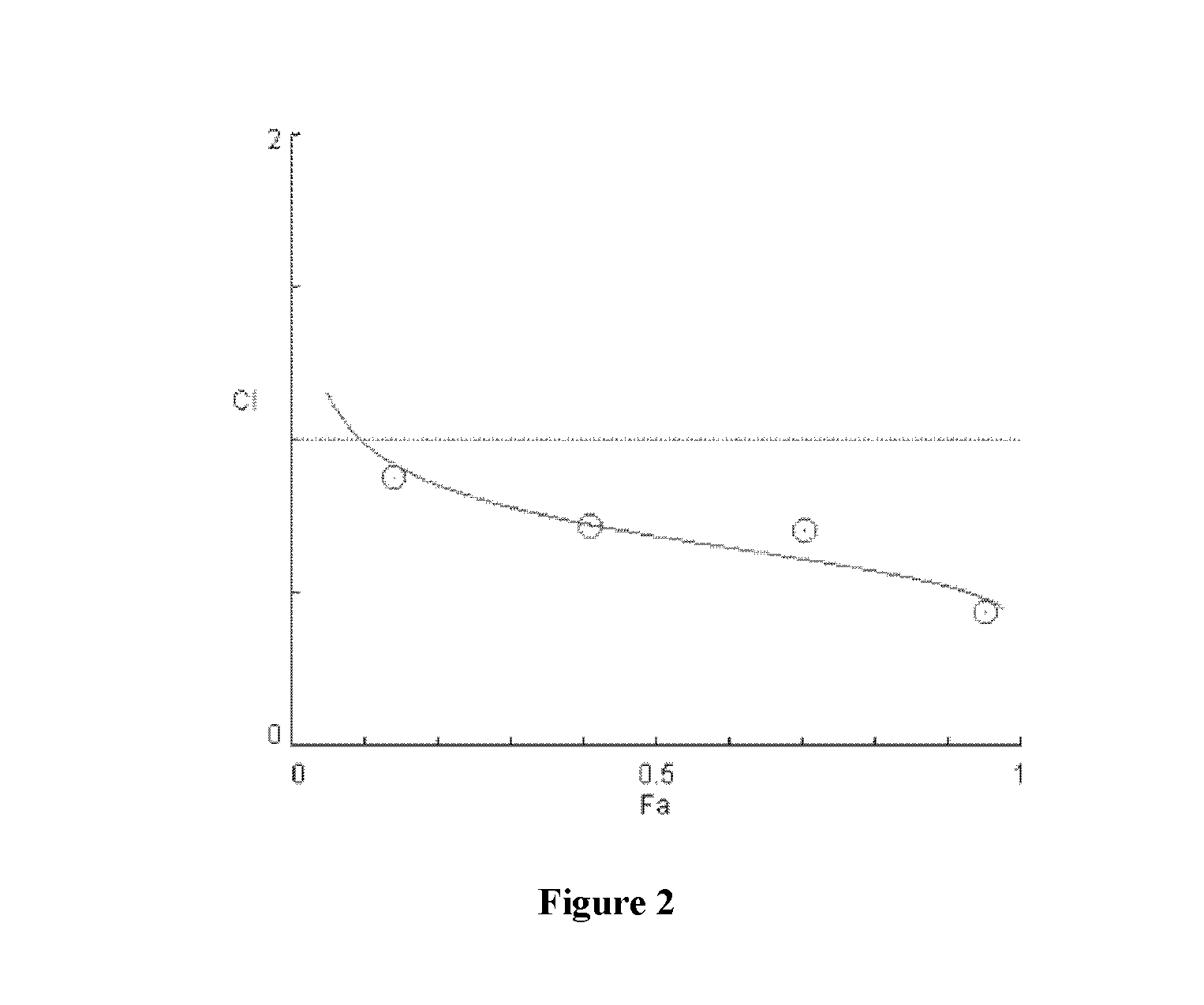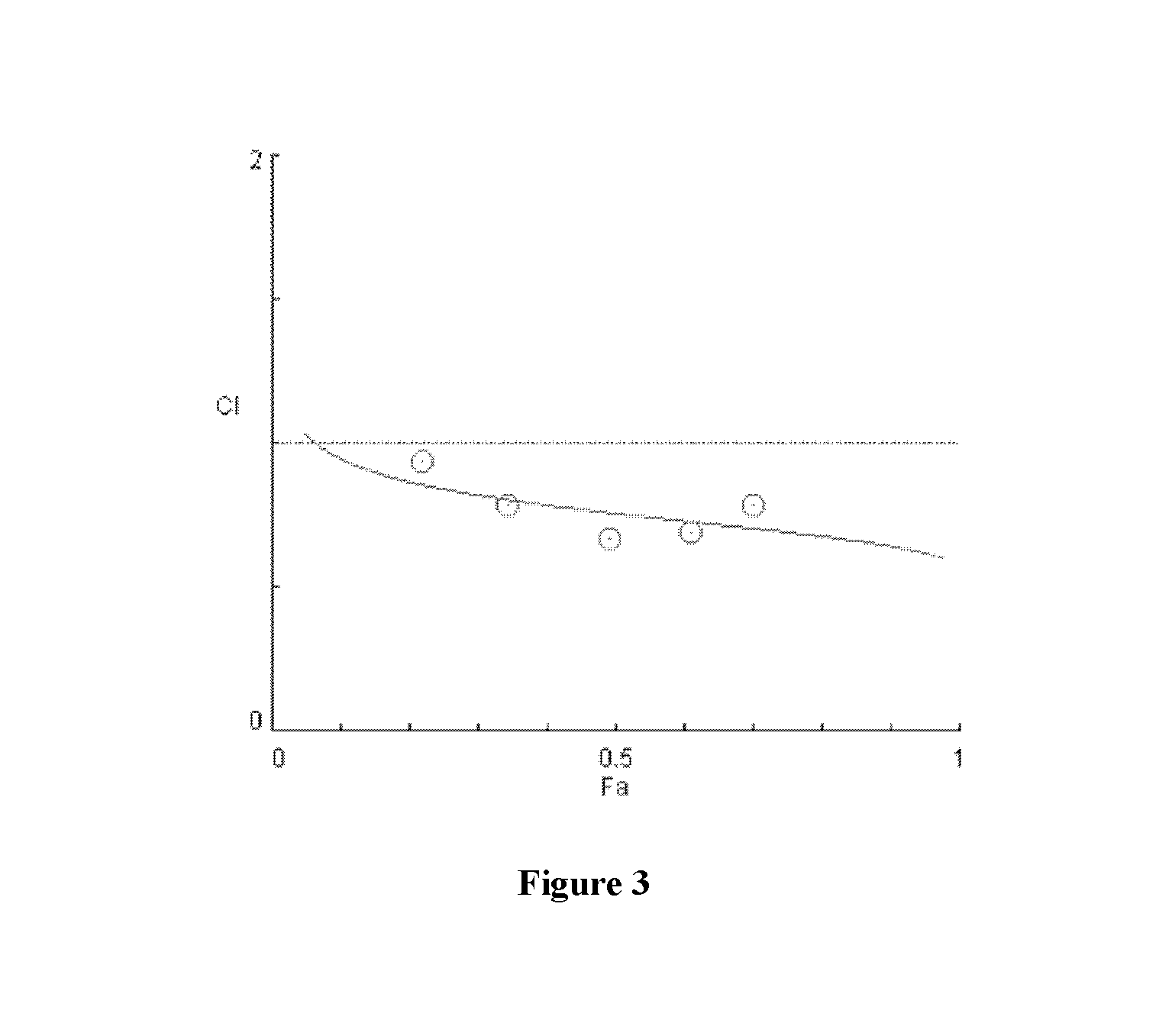Combination therapy using a ruthenium complex
a technology of ruthenium complex and ruthenium complex, which is applied in the field of cancer treatment, can solve the problems of significant synergies in the treatment of cancer, and achieve the effect of significant synergies
- Summary
- Abstract
- Description
- Claims
- Application Information
AI Technical Summary
Benefits of technology
Problems solved by technology
Method used
Image
Examples
example 1
[0061]Cell Culture: Human tumor cell lines including A549, HCT-116, Hep 3B2.1-7, LNCap clone FGC, LoVo, N87, PANC-1 and ZR-75-1 were obtained from the American Type Culture Collection (ATCC) or the UNC Lineberger Comprehensive Cancer Center. The MKL-1 human neuroendocrine skin carcinoma cell line was obtained from the ECACC (European Collection of Cell Cultures). Cell cultures were established using standard in vitro culture methods and supplier recommended media and supplements in 175 cm2 Greiner® or Corning® tissue culture-treated flasks. All cell cultures were incubated in a humidified 37° C., 5% CO2, 95% air environment. The cells were sub-cultured regularly to maintain log phase growth.
[0062]On the day of EC50 plate seeding, the cells for each line were processed and seeded into 96-well cell culture-treated plates one cell line at a time. The cells were removed from their culture flasks using trypsin solution pooled in a sterile conical tube and centrifuged at 350×g for 5 minut...
example 2
[0077]Cell Culture: The hepatocellular carcinoma cell line Hep3B (from ATCC) was grown in RMPI 1640 supplemented with 10% fetal bovine serum. The epidermal carcinoma-derived cell line KB-3-1 was grown in RPMI 1640+10% FCS. See Shen et al., J. Biol. Chem., 261:7762-7770 (1986).
[0078]Cytotoxicity Assays: Cells were plated (2×103 cells in 100 μl / well) in 96-well plates and allowed to recover for 24 hours. Drugs were added in another 100 μl growth medium and cells exposed for 72 hours. The proportion of viable cells was determined by MTT assay following the manufacturer's recommendations (EZ4U, Biomedica, Vienna, Austria).
[0079]As shown in FIGS. 16-22, significant synergies were exhibited by the combination of sodium trans-[tetrachlorobis(1H-indazole)ruthenate(III)] and anti-cancer drugs including erlotinib (FIGS. 16 and 17), BCNU (FIGS. 18 and 19), sunitinib (FIG. 20), and temozolomide (FIGS. 21 and 22) in the cell lines tested.
example 3
[0080]Sorafenib was purchased from LC Laboratories (Woburn, USA). All other substances were purchased from Sigma-Aldrich (St. Louis, USA).
[0081]Cell Culture: The hepatocellular carcinoma cell line Hep3B was purchased from American Type Culture Collection, Manassas, Va. Cells were grown in RMPI 1640 supplemented with 10% fetal bovine serum. The colon carcinoma cell line HCT116 and respective subline with deleted p53 genes were grown in McCoy's culture medium supplemented with 10% FCS. See Bunz et al, Cancer Res., 62:1129-1133 (2002). Lung cancer cell line A549 was grown in RPMI 1640 medium with 10% FCS, and the hepatocellular carcinoma cell line HepG2 was cultured in the Minimal Essential Medium supplemented with non-essential aminoacids, pyruvate, and 10% FCS. Lung carcinoma cell line VL-8 established in the Institute of Cancer Research, Vienna was grown in RPMI 1640 medium supplemented with 10% FCS. See Berger et al., Int. J. Cancer, 73:84-93 (1997). The mesothelioma cell model P31...
PUM
| Property | Measurement | Unit |
|---|---|---|
| time | aaaaa | aaaaa |
| concentration | aaaaa | aaaaa |
| volume | aaaaa | aaaaa |
Abstract
Description
Claims
Application Information
 Login to View More
Login to View More - R&D
- Intellectual Property
- Life Sciences
- Materials
- Tech Scout
- Unparalleled Data Quality
- Higher Quality Content
- 60% Fewer Hallucinations
Browse by: Latest US Patents, China's latest patents, Technical Efficacy Thesaurus, Application Domain, Technology Topic, Popular Technical Reports.
© 2025 PatSnap. All rights reserved.Legal|Privacy policy|Modern Slavery Act Transparency Statement|Sitemap|About US| Contact US: help@patsnap.com



